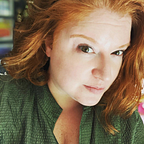new world a-coming (4)
the house we live in
What we’re reading/listening to
- Conversation with Dr. Weisenfeld (mp3 and transcript on Canvas)
- Weisenfeld, “The House We Live In: Religio-Racial Theories and the Study of Religion” (June 2020)
Conversation with Dr. Weisenfeld
The mp3 and transcript are, as I noted above, available on our Canvas page. Not much to say here beyond thanking Dr. Weisenfeld for her generosity, her time, and her invaluable insights into the study of race and religion.
If you can’t get enough of her work (and how could you?), Keeping It 101 has another interview with Dr. Weisenfeld.
Weisenfeld, “The House We Live In”
“For participants in these groups, race was a religious system and religion inextricable from race.”
(Weisenfeld 2020, 442)
We don’t often get to read authors’ reflections on their own work, so I really appreciate the way Weisenfeld both clearly and concisely reiterates her central claims in New World while considering the impact of her thinking beyond the scope of her original project. She says
I used the framework of religio-racial identity to capture how people in these movements formulated selfhood, collective identity, and civic membership or resistance through both race and religion in concert with one another. The framework is not an endorsement of these identity claims nor a normative attempt to situate identity politics in any specific relation to religious studies. Rather, I was interested in elucidating the arguments leaders and members of the groups made for accepting religious narratives of peoplehood as true and in exploring how participants enacted their commitments to these understandings of self and people in the early twentieth-century United States. (Weisenfeld 2020, 443)
How does this help us understand the work Weisenfeld sees religio-raciality doing as a “framework to describe and analyze the world that produced and supported” members of these religiously and racially innovative groups?
How has reading New World helped you better understand the agency of those who join “cults?” Has your thinking about religious and racial belonging shifted in conversation with Weisenfeld’s work?
Rather than identifying an obvious set of groups or essential characteristics that distinguish these from “religions,” such deployment of the language of “cult” expressed normative values that produced and policed the boundaries of what these interpreters determined to be legitimate religion…Designating them religio-racial movements allowed me to avoid essentializing “cult” qualities and highlight the features that unite them in the context of my study — the emphatic conjoining of religion and race — but leave open the possibility of other configurations into which they might also fit. (Weisenfeld 2020, 443–4)
Weisenfeld explored this issue at greater length in New World, but it’s worth revisiting. Why is she insisting on using a religio-racial framework to think about these groups, rather than considering them “cults?”
My understanding of religio-racial identity emerged from consideration of the quotidian, daily practices of life within these early twentieth-century Black movements and the ongoing struggles of members to gain recognition as individuals and collectives in the face of resistance from various arms of the state and white citizens who assumed state-like authority. (Weisenfeld 2020, 444)
One of the most remarkable aspects of New World, I think, is the way Weisenfeld draws us into the “quotidian, daily practices of life” that contribute to religio-racial self-fashioning. Which practices stood out to you? Were you surprised at how individuals and communities re-made themselves through naming, dress, foodways, and other religio-racial practices? She also highlights the intersection — and often clash — of religio-racial movements and their members with the state and with white Americans who authorized themselves to police R-R movement members’ behavior. What examples of bureaucratic or law enforcement negotiations of religio-racial identity stood out to you?
The religio-racial framework in New World A-Coming emerged out of my engagement with the texts, practices, and histories of the leaders and members of the groups and helped me to describe a mode of Black world-making and politics, situated in historical context and responding to specific conditions of domination…refusing to privilege white agency in the production and authorizing of racial categories. (Weisenfeld 2020, 446)
Race-making — racialization, as we’ve discussed it — infuses New World; Weisenfeld emphatically underlines the agency of Black religio-racial innovators in making American Blackness during the Great Migration. What does she mean in this passage — why is it important to “refus[e] to privilege white agency” in the creation and enforcement of race?
The religions of Black people have historically been accorded limited space in the house we live in, be it the American house or the religious studies house. Black religions have served as evidence of superstitious backwardness against which to measure “real” religion, as data of essential primitive religious characteristics for theorizing, as a sign of religion’s utility in aiding black people’s survival of colonialism, slavery, and enduring racism, and as a moral prod to white American Christians. In this conventional approach, Black religions may be present as tenants or servants, but they reside in a house owned by others. In the religious studies house, the commonly recognized owners are those who assert the power to theorize in universals from positions of remove from claims of influence of racialization or commitment to hierarchies of religion. (Weisenfeld 2020, 455)
How, according to Weisenfeld, has Black religion historically been studied? What do we miss when we approach Black religiosity in these ways?
This is not to reinscribe notions of universally applicable theory built on the frame of “religio-racial identity,” but to insist on continuing to develop approaches to the study of religion that attend to the kinds of questions about difference and power that the study of race and religion affords and that prioritize the voices and experiences of historically marginalized people in our theoretical frames. (Weisenfeld 2020, 456)
How does Weisenfeld’s theory of religio-raciality help us better approach the study of religion? What do we gain by attending to power and difference?
